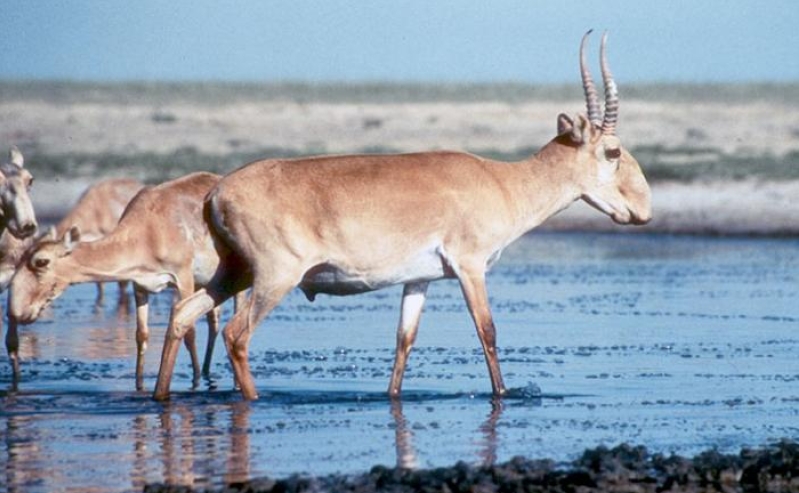
Over 120,000 saiga antelopes, more than one-third of the total worldwide population, have mysteriously died off in Kazakhstan so far. Officials in the country indicated that a bacterial infection could be behind the mass deaths.
According to a press release from the Convention on the Conservation of Migratory Species of Wild Animals, or CMS, a combination of environmental and biological factors has contributed to this catastrophic event. The population of the endangered antelopes totaled around 50,000 animals just 10 years ago after a 95 percent crash in numbers.
"This loss is a huge blow for saiga conservation in Kazakhstan and in the world, given that 90 percent of the global saiga population is found in our country," Erlan Nysynbaev, Vice Minister of the Ministry of Agriculture of Kazakhstan, said. "It is very painful to witness this mass mortality."
Nysynbaev added that Kazak authorities, along with experts within the country and around the world, "are determined to identify the causes and undertake all possible efforts to avoid such events in the future."
According to the CMS press release, most of the dead antelopes consisted of mothers and calves, adding that "not a single animal survived in the affected herds." However, members of the CMS expert mission speculated that Pasteurella and Clostridia bacteria pathogens may have contributed to the antelope's massive decline.
"However, the hunt for the fundamental drivers of the mass mortality continues since these bacteria are only lethal to an animal if its immune system is already weakened," CMS wrote.
Raushan Nurshayeva of Reuters reported that 40 percent of Kazakhstan's population of saiga antelope, recognizable by lyre-shaped horns and a bulbous nose, has died in the past two weeks. Animal experts thought a respiratory disease could play a factor in the mass deaths.
"The death of the saiga antelope is a huge tragedy," zoology scientist Bibigul Sarsenova said. "Should this happen again next year, they may simply disappear."
According to Reuters, the first dead antelope was found on May 11; the population of saiga in Kazakhstan was estimated at 300,000. However, nearly 121,000 carcasses have been found by May 27, according to Agriculture Ministry officials.
"We believe the cause of the deaths is pasteurellosis," Yerzhan Madiyev, deputy head of the ministry's veterinary committee, said in a news conference.
Reuters reported that pasteurellosis is a bacterial disease that can spread to humans, cattle, rabbits, cats and dogs. The bacteria live in the upper respiratory tract and can be dangerous once the immune system is compromised.
"Experts from Britain, Germany and the World Organization for Animal Health have come to help Kazakh scientists investigate," Nurshayeva wrote, citing Bagdat Azbayev of Kazakhstan's Agriculture Ministry.
CMS Executive Secretary Bradnee Chambers noted that saiga antelopes have previously bounced back quickly from massive die-offs before. However, CMS acknowledged that "the scale of the current event is unprecedented relative to the total population size."
"Our hope is that if we can control what is driving these mass mortality events as well as tackle the number one threat to saigas - wildlife crime and poaching - populations will be able to recover," Chambers said. "Collaboration among all stakeholders is vital."
According to Reuters, more than 1 million saiga roamed Kazakhstan in the 1990s, but poaching and disease took those numbers down to 21,000 by 2003. The antelope is also priced for its "delicious" meat, which tastes similar to "succulent lamb."







